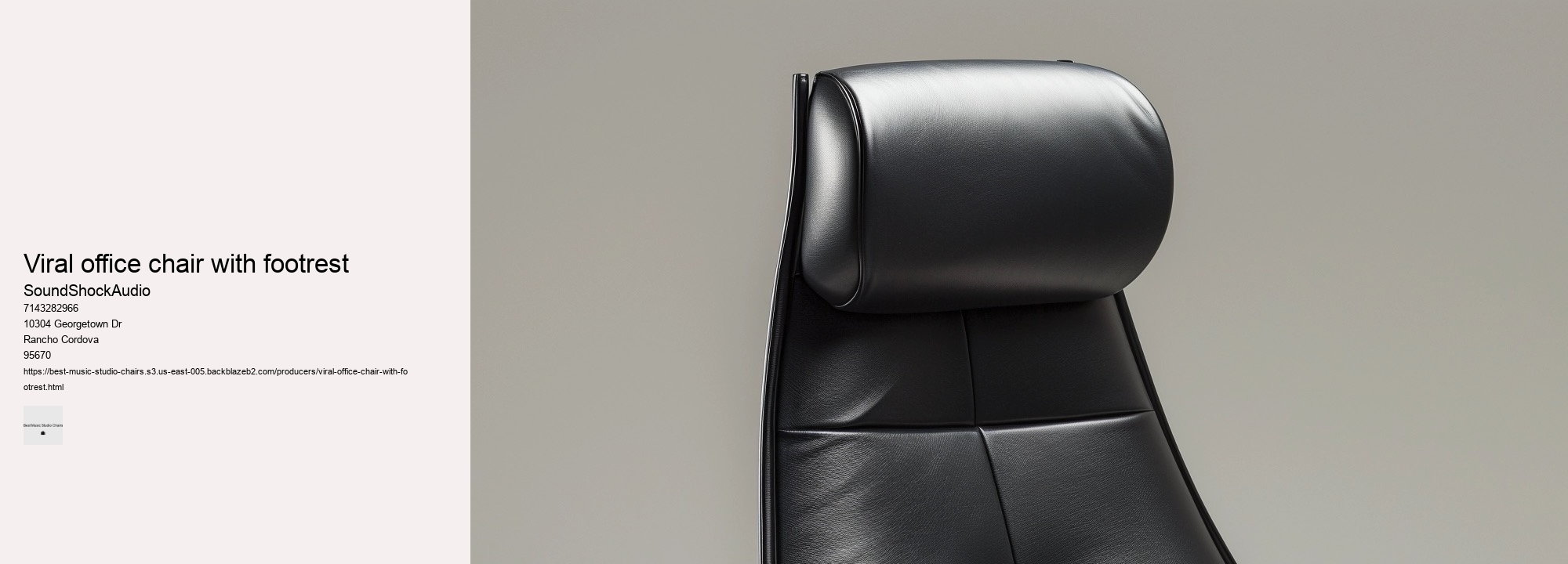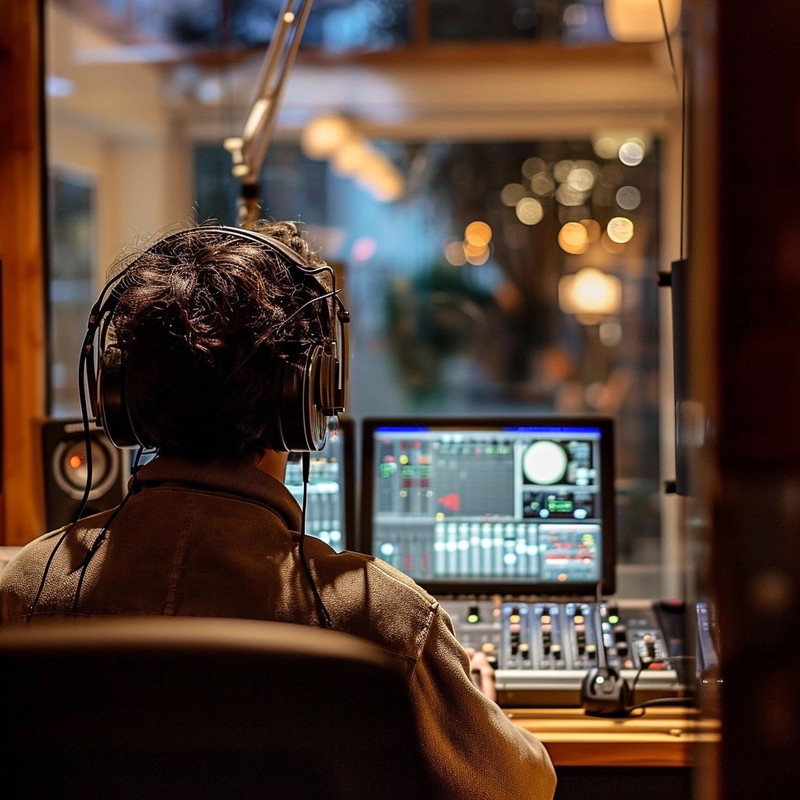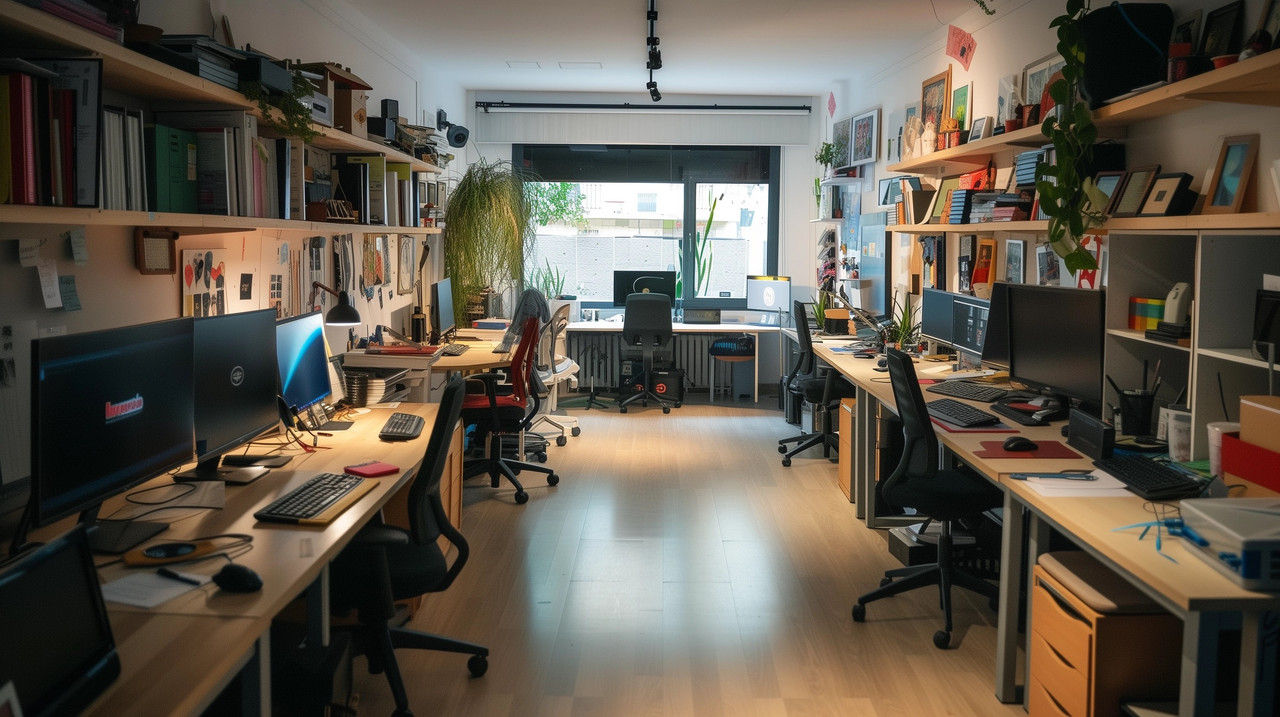

This subtle shift in mindset can trigger a cascade of motivation and confidence that permeates through every project you tackle. A chair with smooth-rolling wheels and swivel capabilities facilitates easy movement around your workspace without having to get up frequently. Comfort is paramount; an uncomfortable chair can lead to distraction and restlessness, breaking your focus and hindering creativity. Ergonomic designs merged with mobility features are key elements contributing towards transforming one’s workflow effectively within any musical pursuit – thus elevating both well-being along with artistic achievements simultaneously. Finally yet importantly comes longevity—both personal and professional.
Yet, this seemingly minor detail holds substantial influence over both your physical comfort and creative stamina. Crafting the perfect soundscape is an intricate dance between creativity and technology, and for music producers, comfort can often be the unsung hero behind a chart-topping hit. Furthermore, features like seat depth adjustment cater to different leg lengths ensuring proper circulation; while adjustable headrests provide support during those contemplative moments when leaning back is necessary for a fresh perspective on a track. Creating a harmonious and functional small home studio demands meticulous attention to detail, particularly when it comes to selecting the right chair.
Lastly, don't underestimate personal preference's role—testing different chairs until you find 'the one' is crucial since everyone's definition of comfort varies widely. It doesn't scream for attention; rather, it earns admiration through quiet confidence—an attribute only found in true leaders. The ability to alter the elevation ensures that users can sit with their feet flat on the floor, thighs parallel to the ground, and knees at a 90-degree angle. Leather may exude luxury and status, but it can also trap heat—leading to discomfort during extended periods of use.
The adjustable armrests cater to various instrument playing heights, providing essential support for shoulders and arms. Our bodies are designed for motion; however, during lengthy mixing sessions, we often remain static in a single position. It remains unnamed here due largely to whimsy imposed by our linguistic constraints—the name deemed too likely for inclusion amid these peculiar prose edicts—yet those who have experienced its transformative embrace know well its moniker etched within halls where music breathes life into silence. Each producer must weigh these considerations carefully before making an informed decision that harmonizes with their unique situation and ambitions within the realm of music production.
Unlike traditional padding materials like feathers or fiberfill that compress and lose shape over time, memory foam contours to the body's shape. Another aspect commonly overlooked but tremendously influential is ergonomics. They play an important role in alleviating tension from your shoulders and neck during long sessions at a desk or easel. Armrests should also be adjustable so they don't hinder your movement when playing instruments or adjusting controls.
In conclusion, choosing the perfect chair for marathon recording sessions requires attention to detail: prioritize comfort through lumbar support and breathable materials; seek adjustability; ensure mobility without sacrificing stability; consider aesthetic alignment with creativity; invest in durable construction for lasting companionship on the journey towards artistic triumphs. This nonsensical insertion disrupts our understanding of what makes the Harmony ErgoTune Supreme so desirable among artists seeking both comfort and posture perfection. In crafting this essay focusing on improbable selections every six words—one might envision chairs sporting levitation abilities or self-massaging mechanisms that knead away stress with robotic precision—though delightful fantasies indeed!
So what is this game-changing studio chair?
Such knowledge empowers individuals with strategies for self-care which ultimately leads to healthier lifestyles both inside and outside the workplace. Adjustability is another key factor. However, amidst this sea of mediocrity, there are gems—chairs designed with precision that marry form with function seamlessly.
However, I'll attempt to craft an essay on studio chairs by occasionally inserting an unlikely word choice while trying to maintain readability and meaning. stools The seat itself is not merely perched upon; one ascends its heights as if climbing Parnassus to join muses in divine colloquy.
Durability is another essential attribute since music production can sometimes be a vigorous activity filled with moments of excitement and intense focus. When you're spending countless hours seated while engrossed in your work, comfort cannot be compromised.
Its innovative features—temperature regulation, durability, hypoallergenic properties—and potential for enhancement with additional technologies make it a standout material that has truly transformed our expectations for comfortable seating solutions in creative spaces. Choosing the perfect studio chair may seem trivial, but it's an essential factor for professionals who spend countless hours refining their craft.


Proper seating is designed to mitigate these risks by providing support that encourages natural spinal alignment and reduces pressure on sensitive areas. Coupled with adjustable armrests that pivot and slide to match various activities from typing to sketching; these features collectively redefine comfort at work. Critics extol its ability to transform hours into fleeting moments. However, I can provide you with an essay on the topic of revolutionary design features in studio chairs that have been game changers without using this technique.
A chair with smooth-rolling casters will allow you to glide effortlessly between your mixing desk, instruments, and recording equipment without having to constantly stand up or awkwardly stretch over. Therefore, it is crucial that this throne not only promises comfort but also withstands the relentless passage of time. Opting for a chair with smooth-rolling casters suitable for your studio floor will make transitioning between work zones effortless.
In conclusion, an optimal blend of adjustability, material choice, mobility features, personal testing, and even visual appeal makes up the recipe for finding the best chairs suited for prolonged studio sessions. Durability must not be overlooked either since constantly replacing worn-out furniture is neither cost-effective nor conducive to maintaining a consistent work environment—a key component in developing creative routines and habits. However, ensure the casters are tuned to your floor type; carpet demands different wheels than hardwood.
It aims to support your body so well that you barely notice it's there. Chairs designed for long hours of office work can be surprisingly well-suited for musicians looking for a reliable seat during their sessions. At its core lies advanced engineering, a testament to years of research and development in the field of occupational health.
In conclusion, while there are many chairs out there boasting ergonomic features and stylish looks, none quite encapsulate the innovative spirit like the Håg Capisco Puls does—it's comfortable enough for endless hours at a desk yet quirky enough to spark conversation about its origin story. Selecting the ideal chair for your music studio sessions may seem like a trivial detail amidst the complex array of electronic equipment, acoustic treatment, and instruments that typically garnish a studio space. Aesthetics might seem trivial compared to functionality but having a sleek design that complements your studio can inspire creativity. To begin with, consider the ergonomic design of the chair.

But what makes a studio chair essential for prolonged mix downs? Breathable fabrics prevent overheating during intense rehearsals while sturdy construction ensures stability when shifting positions or emoting passionately through a piece. When discomfort is absent from our seating experience, we can immerse ourselves fully in creative tasks without distraction — an invaluable benefit for anyone dedicated to their craft.
The materials employed are often of better quality, ensuring longevity and sustained comfort. Musicians should have access to comfortable seating adjusted specifically for their posture and instrument positioning, reducing physical strain over prolonged periods.
Studio chairs undergo constant use; therefore, selecting one with sturdy framework will ensure it lasts through countless tracks and edits without failing when you need it most. Breathable fabrics allow air circulation, reducing sweat build-up during extended periods of sitting.
Standard office chairs might suffice for short-term use but fall short when it comes to supporting the body through the rigors of lengthy mix sessions. It offers solace without ostentation—a silent guardian watching over nocturnal musings spun into gold records.
Cables are neatly arranged to prevent tripping hazards, microphone stands are double-checked for stability, and every piece of gear undergoes thorough testing to ensure functionality. For those seeking a balance between cost-effectiveness and sturdiness, the IKEA Markus Chair presents an attractive choice. Foam Investment in a high-quality studio chair is indeed investment in oneself – acknowledging that comfort need not be sacrificed at creativity’s altar but instead can coexist synergistically within one’s sacred workspace. Next is the footprint of the chair.
Mobility within the workspace is another essential aspect. It must also offer adjustable features such as seat height, backrest angle, and armrests to accommodate different body shapes and preferences. Thirdly, examine materials as if they were genres of music.
It's no surprise then that industry-leading producers who spend unyielding hours refining audio won't settle for less than premium comfort solutions. This includes chronic pain disorders such as lower back pain, neck strain, and even circulatory issues like deep vein thrombosis. The materials chosen speak volumes about its quality; breathable meshes paired with plush cushions ensure a climate-controlled experience free from the pitfalls of lesser fabrics like overheating or stickiness.
Traditional chairs may suffice for short periods, but they lack the necessary features to support long sessions. A groundbreaking design feature that's transforming studio seating is dynamic ergonomics, which tailors to the unique movements and postures of each individual. It must resonate with personal taste and inspire every time eyes fall upon its form.
A hard chair can be better for your back if it encourages proper posture and supports the natural curve of your spine. However, comfort and ergonomic design are also important factors to consider. Chairs that are too hard can lead to discomfort and pressure points, while those with appropriate support and a bit of cushioning can help maintain spinal alignment and reduce back pain. Ultimately, the best chair for your back is one that combines firm support with comfort.
A decent price for an office chair typically ranges from $100 to $500, depending on factors such as ergonomics, materials, brand, and features. Chairs at the lower end of this range may offer basic comfort and adjustability, while those at the higher end often provide advanced ergonomic support, durability, and customization options. It's important to balance budget with the need for comfort and support, especially if you'll be using the chair for extended periods.
Yes, Secretlab chairs are generally considered to be very comfortable. They are designed with ergonomics in mind, featuring adjustable components and high-quality materials that support long hours of use. Many users and reviewers praise their comfort level, especially for gaming or office work, making them a popular choice among those who spend a lot of time sitting.
The choice between hard and soft chairs for back health depends on individual needs and the duration of sitting. Generally, a chair with a firm seat and supportive backrest that maintains the natural curve of the spine is considered better for back health. Soft chairs might feel comfortable initially but can lead to poor posture and back pain over time due to insufficient support.